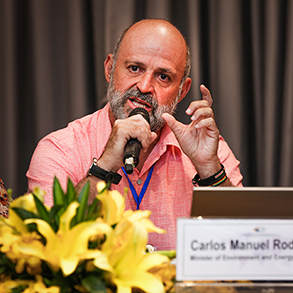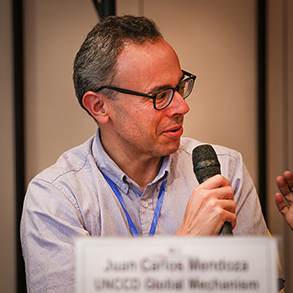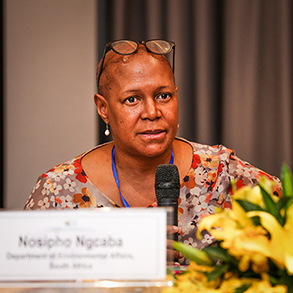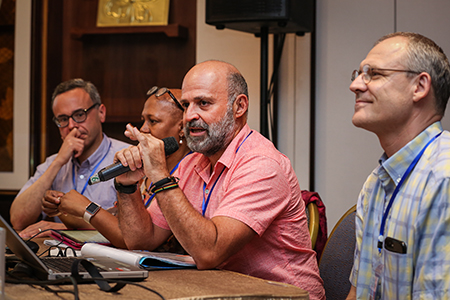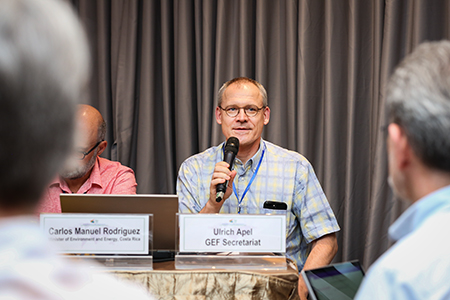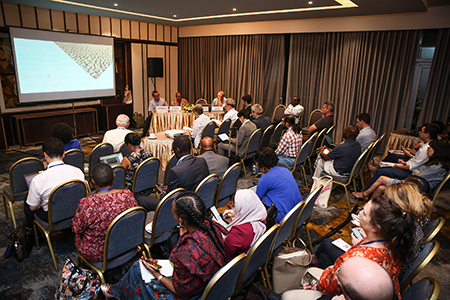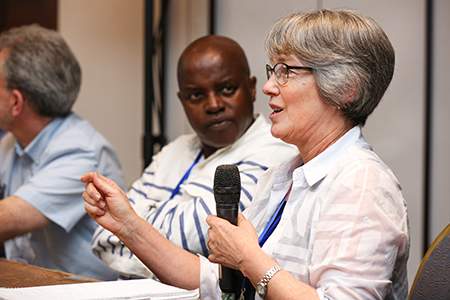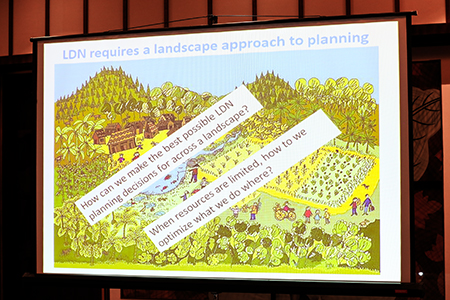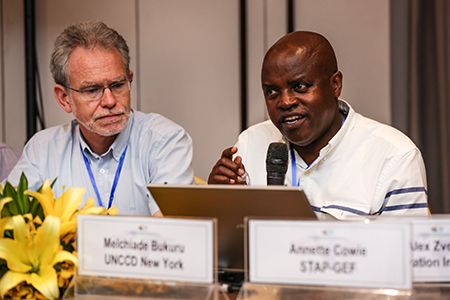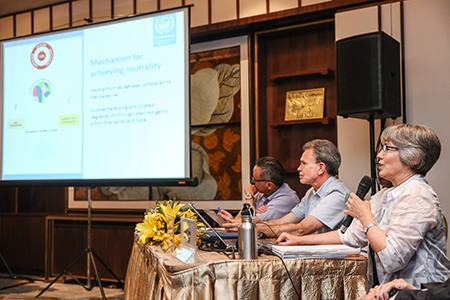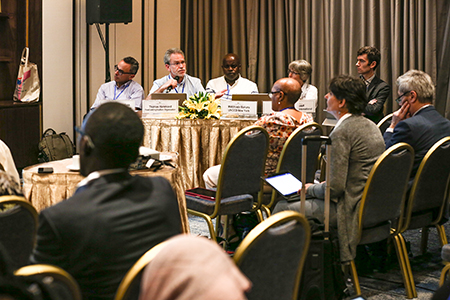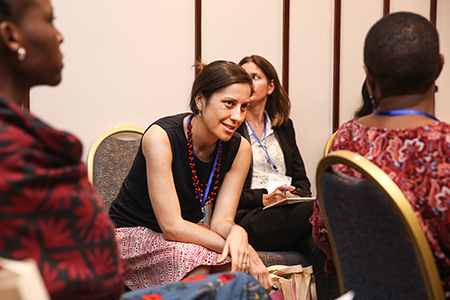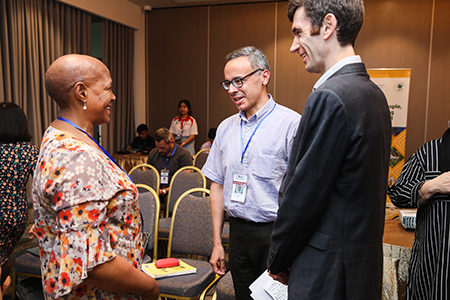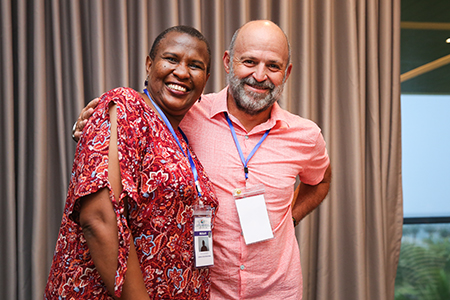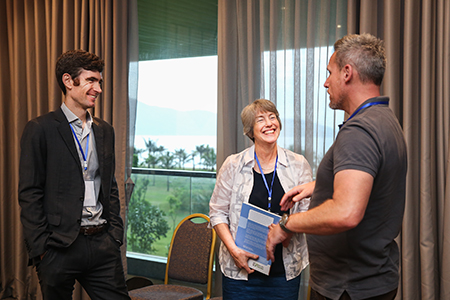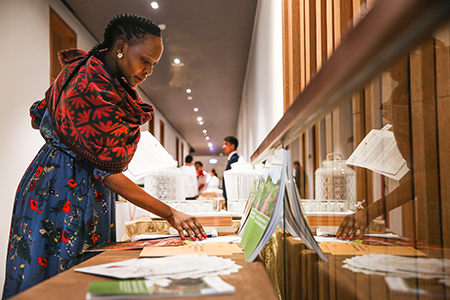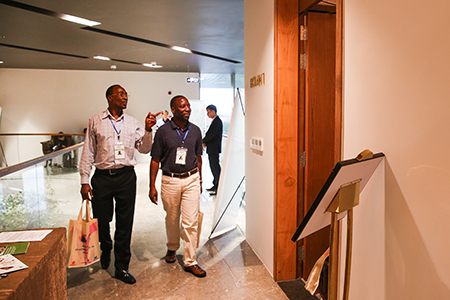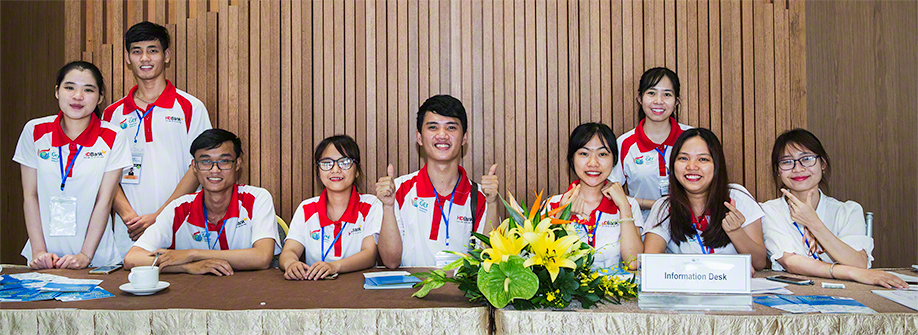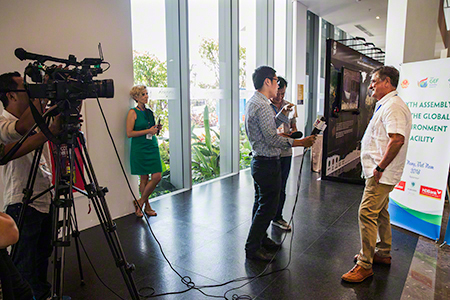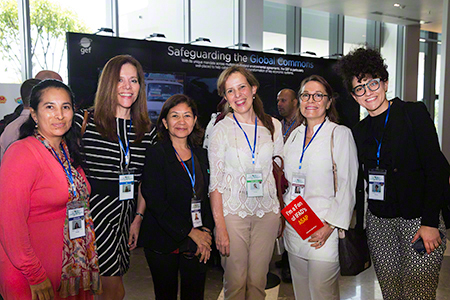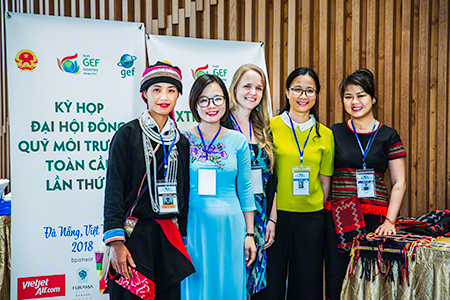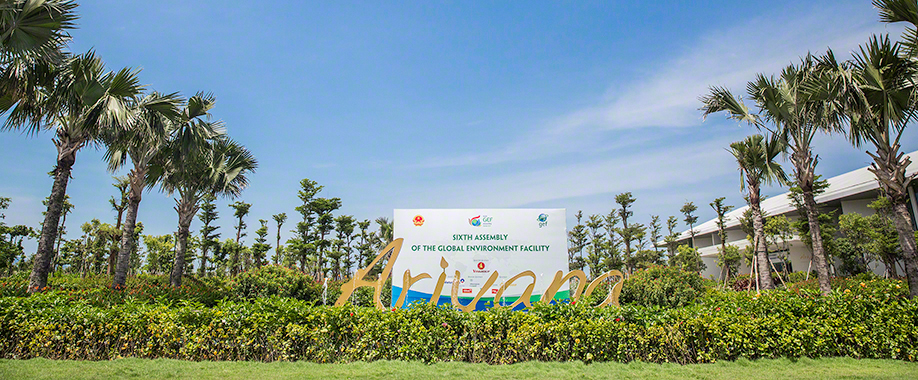|
This side event took place on Sunday, 24 June 2018 at the Ariyana Convention Centre in Da Nang, Viet Nam. The event showcased successful sustainable examples of how spatial data assessments can help drive management and restoration of degraded lands and support country ownership, while ensuring socio-economic and environmental benefits for vulnerable dryland communities. Panelists were invited to: share experiences and lessons learned on land degradation and restoration assessment, and monitoring at the global, national, and local level; highlight experiences and successes on sustainable land management and restoration for scaling up under GEF-7; and demonstrate land degradation neutrality (LDN) target setting and implementation at country level.
Moderator Juan Carlos Mendoza, UNCCD Global Mechanism, presenting the panelists, reported that every three seconds a hectare of land is lost due to land degradation. He warned that 1.5 billion people are trapped on degraded agricultural land, and these comprise some of the world’s most impoverished countries.
Providing opening remarks, Ulrich Apel, Land Degradation Focal Area Coordinator, GEF Secretariat, welcomed the LDN concept, saying it has been recognized as an “integrator” of the Sustainable Development Goals (SDGs). He described the GEF’s role in helping 60 countries to set their voluntary targets and approving US$80 million to advance a further 20 projects. On the GEF-7 replenishment cycle, he said donors have agreed to increase the LDN focal area by 10% despite the overall decrease of the GEF funding. He underscored the need to: improving enabling frameworks; appropriate policy regulations and monitoring; capacity building; and to partner with the GEF’s Scientific and Technical Advisory Panel (STAP) to develop policy guidance that will assist projects on the ground.
In a keynote presentation, Carlos Manuel Rodriguez, Minister of Environment and Energy, Costa Rica, emphasized the need to move away from perverse incentives and frameworks that were developed during the previous century and caused massive land degradation in many forested countries. He described his country’s change of strategy to double forest cover, which led to “tripling” economic growth despite the country doubling its population. He reported on the land use capacity map that was used as a tool to identify soil types and indicate relevant crops, and designing the correct institutional framework to reverse land degradation.
Nosipho Ngcaba, Directo-General, Department of Environmental Affairs, South Africa, shared the South African experience, reminding that all ecosystems are under pressure with the planetary boundaries at their limits. Lamenting that investments in sustainable land management are not always well-informed, she described the “work-for” suite of environmental approaches in her country to provide work opportunities to the unemployed, while eradicating invasive plant species, fighting forest fires and restoring wetlands.
During the ensuing panel discussion on restoring and monitoring drylands through technical tools, Annette Cowie, Adviser on Land Degradation, STAP, explained the term LDN provides a mechanism for achieving no net loss compared to the base line. Cowie highlighted that prevention or avoiding land degradation remains the preferred course of action, and stressed the need for planning, as done through the LDN Logic Model. She further explained the use of resilience assessment, land-use scenarios and integrated land use planning, saying counterbalancing future land degradation has been adopted as a new approach.
Melchiade Bukuru, Chief, UNCCD’s New York Office, citing the SDG motto to “leave no one behind,” warned that those being left behind are the inhabitants of the drylands. He suggested the drylands as the most appropriate places to start interventions and make investments, and emphasized that identifying these degraded “hot spots” is crucial to accelerate the SDG achievements.
Thomas Hammond, Senior Land Officer, FAO, presented the Collect Earth tool, describing it as the “local knowledge meets cloud” computing for land monitoring, which, he said, will support land monitoring efforts, and provide accurate assessment at national, local and global level. Using the example of Cape Verde, he explained the use of the tool to identify: the increase of 16% forest cover on the island; changes in land use; and an increase of 47.9 square kilometer degraded land, with 138 square kilometers of land restored, resulting in a net gain in land productivity.
Alex Zvoleff, Senior Director of Resilience Science, Trends Earth, Conservation International, presented on the Trends.Earth tool, highlighting as the main challenge finding ways to assess and track land degradation and guide efforts to achieve LDN. On the indicators, he noted that the tool: can set baselines and track progress towards achieving LDN; leverages cloud computing technology and allows the use of the best available data; and enables identification of lands that are either degrading or improving through using standardized data.
|
|



